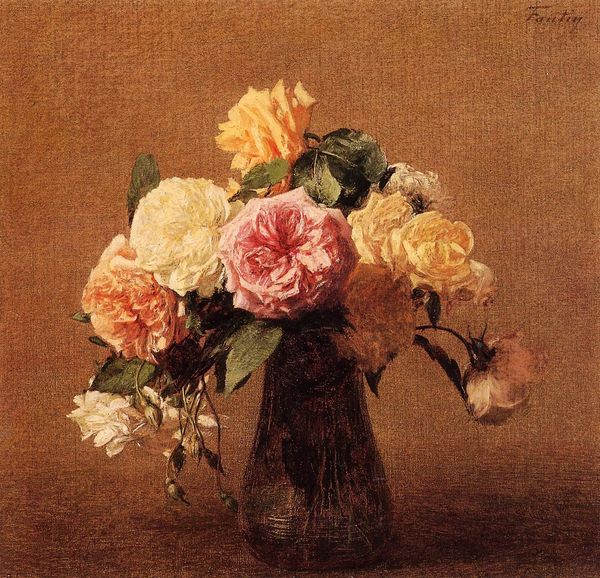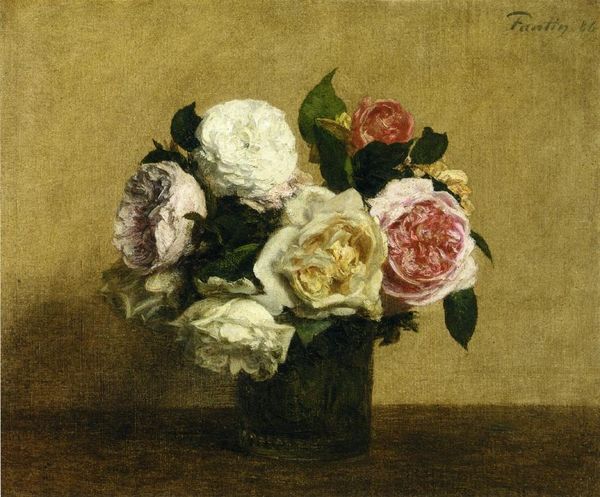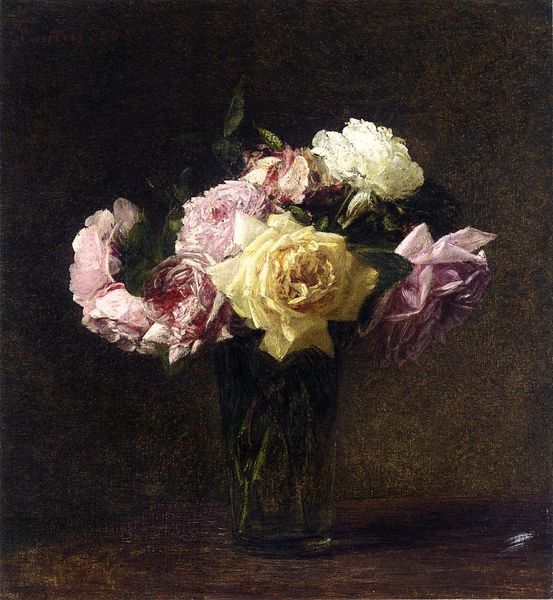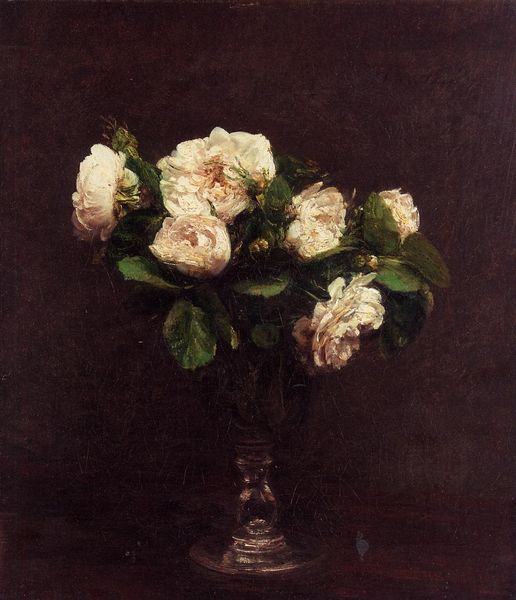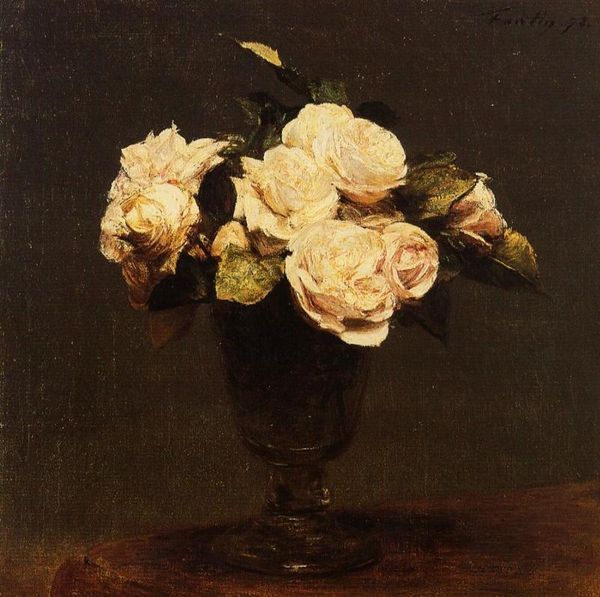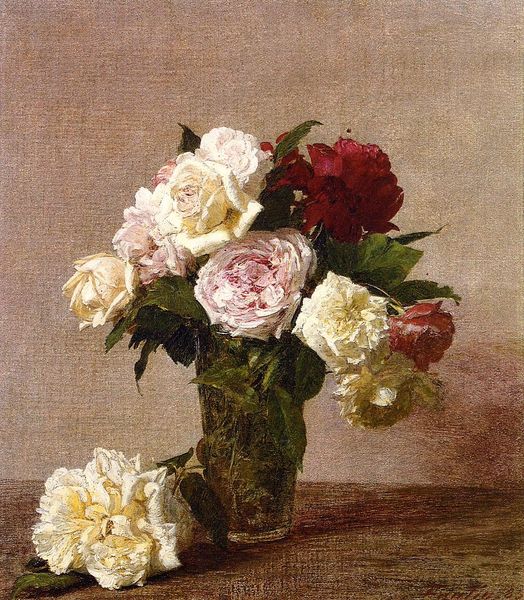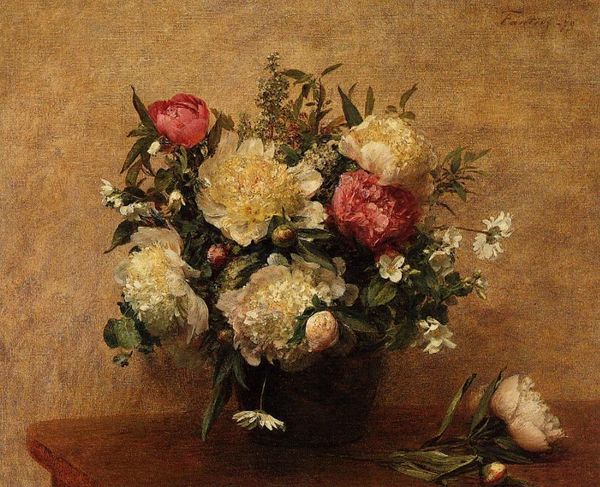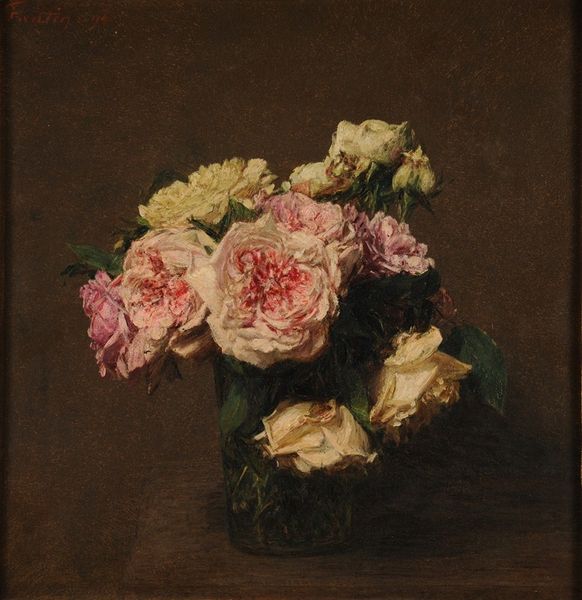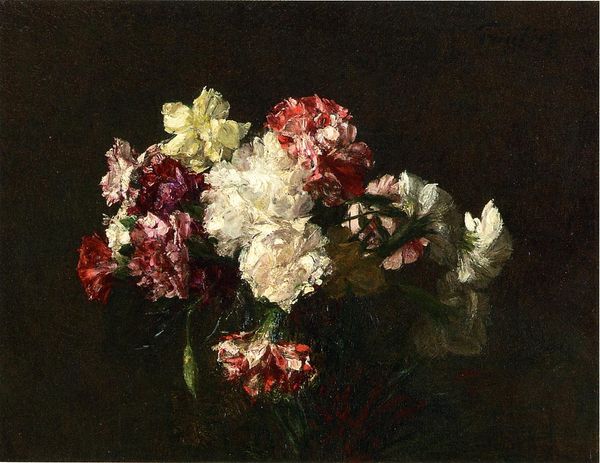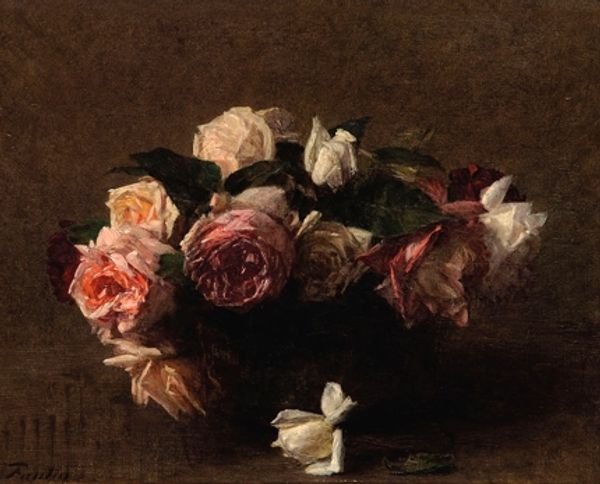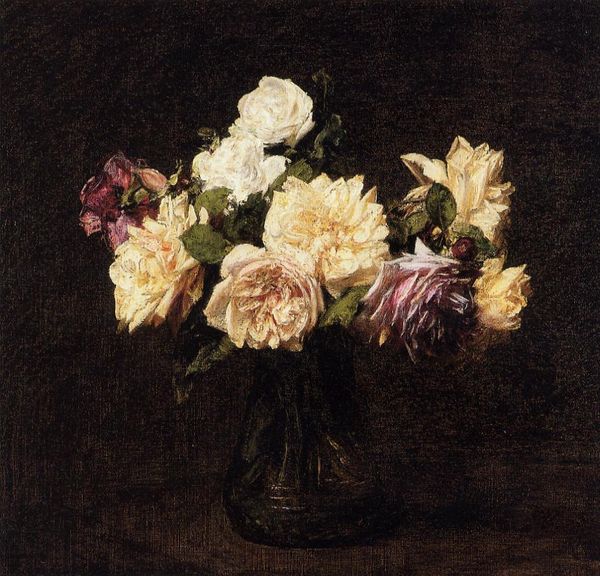
Copyright: Public domain
Art Historian: Before us is Henri Fantin-Latour's "Bouquet of Roses," created in 1902 using oil paint. The canvas presents an array of roses in varied pastel shades. Curator: It strikes me immediately how muted the colours are, almost like a faded memory. The wilting of the flowers is apparent; there's a sense of passing time and decay. Art Historian: Precisely. Roses have been imbued with layered symbolism through ages and across cultures—love, beauty, passion, and secrecy. Fantin-Latour captured the transient beauty, perhaps hinting at fleeting joys. Consider how roses frequently symbolized the Virgin Mary; the colors here suggest complex purity—faded innocence tinged by worldly experience. Curator: I'd say that these wilting roses prompt broader questions about how society historically idealizes women and imposes impossible standards. Think of the concept of "dying beauty." I question this portrayal and ask what meaning we might find in decay or older age rather than adhering to these oppressive expectations. Art Historian: The positioning of each bloom offers subtle psychological clues. The downward gaze and almost burdened aspect imply contemplation of loss or a bittersweet recognition of what's gone by. These blooms transcend simple beauty; they are imbued with sentiment. Curator: Right, but what kind of sentiment, and for whom? Was Fantin-Latour painting from a place of genuine mourning or aestheticizing loss, reinforcing the view that women's value diminishes over time? These paintings were often intended for a bourgeois male gaze, framing even the passage of time in palatable terms. We can't disregard that. Art Historian: A compelling counterpoint, I would observe in closing that rose images provide avenues into wider realms of personal meditation upon love, longing, remembrance—encoded visually so we might better know and consider such sentiments ourselves. Curator: Certainly. Engaging critically with such sentimental symbols offers new dimensions. It helps contextualize, offering nuanced ways to challenge their conventional associations as we actively reclaim and rewrite personal and collective narratives.
Comments
No comments
Be the first to comment and join the conversation on the ultimate creative platform.
